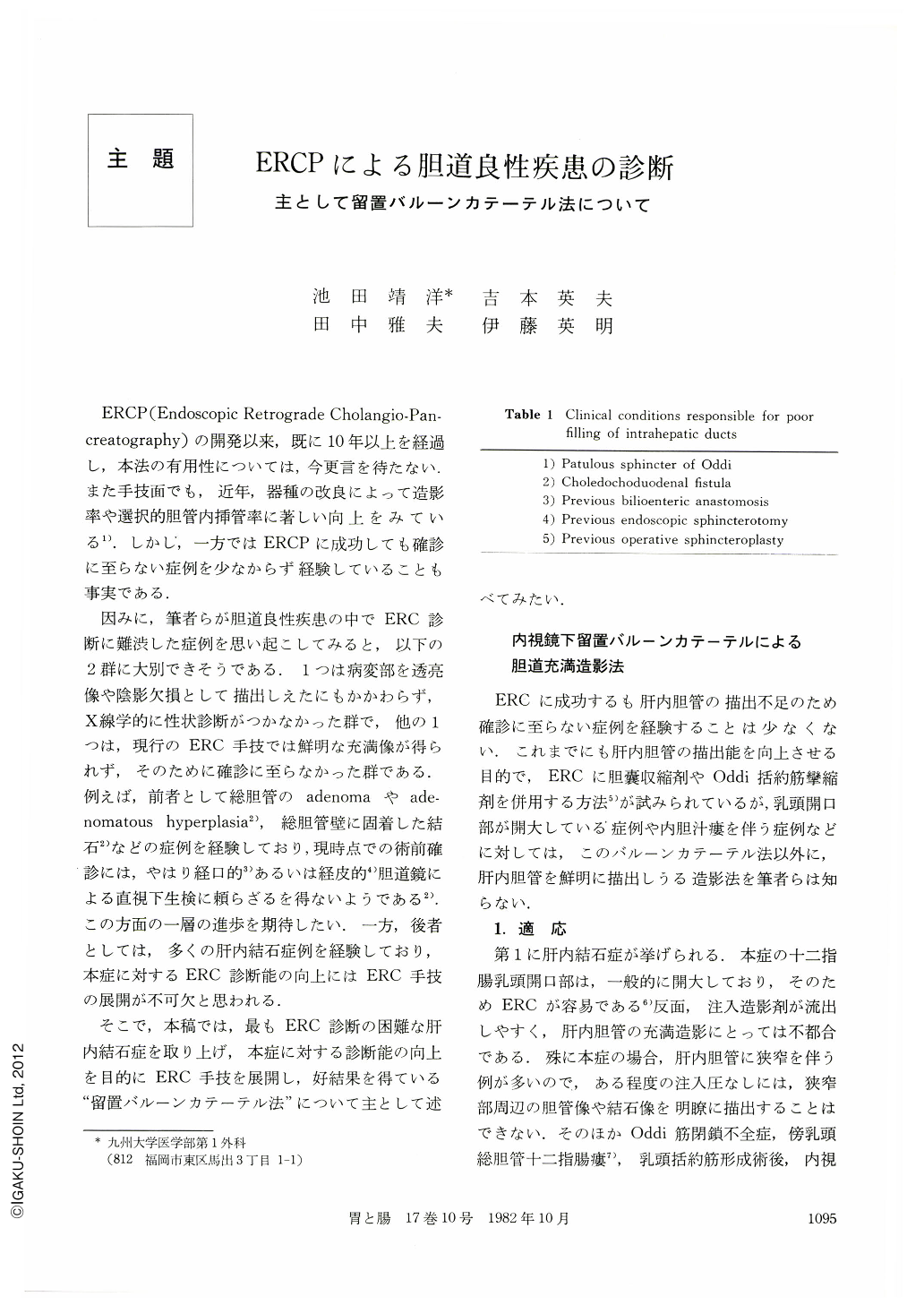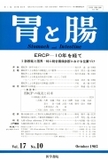Japanese
English
- 有料閲覧
- Abstract 文献概要
- 1ページ目 Look Inside
ERCP(Endoscopic Retrograde Cholangio-Pancreatography)の開発以来,既に10年以上を経過し,本法の有用性については,今更言を待たない.また手技面でも,近年,器種の改良によって造影率や選択的胆管内挿管率に著しい向上をみている1).しかし,一方ではERCPに成功しても確診に至らない症例を少なからず経験していることも事実である.
因みに,筆者らが胆道良性疾患の中でERC診断に難渋した症例を思い起こしてみると,以下の2群に大別できそうである.1つは病変部を透亮像や陰影欠損として描出しえたにもかかわらず,X線学的に性状診断がつかなかった群で,他の1つは,現行のERC手技では鮮明な充満像が得られず,そのために確診に至らなかった群である.例えば,前者として総胆管のadenomaやadenomatous hyperplasia2),総胆管壁に固着した結石2)などの症例を経験しており,現時点での術前確診には,やはり経口的3)あるいは経皮的4)胆道鏡による直視下生検に頼らざるを得ないようである2).この方面の一層の進歩を期待したい.一方,後者としては,多くの肝内結石症例を経験しており,本症に対するERC診断能の向上にはERC手技の展開が不可欠と思われる.
Even in our present state of established techniques and improved equipments of ERCP, we not infrequently face a difficulty in making a diagnosis of intrahepatic lesions if sufficient filling of intrahepatic bile ducts cannot be obtained due to various conditions (Table 1). Forty-four such patients (Table 2) were investigated using a balloon catheter to block a backflow of contrast medium injected and fill the bile duct under pressure. In an early phase of the study, cholangiograms were obtained with the duodenoscope in place; more recently, the scope was removed leaving the balloon catheter in the bile duct to reduce the patient's discomfort and facilitate posture changes (Fig. 2). “Standard” cholangiograms were taken in the head-down prone position at the first notice of the backflow of contrast medium before inflation of the balloon in all individuals, and compared with films obtained under pressure by the balloon method. The “standard” films gave a definite diagnosis of intrahepatic stones in only one patient, whereas the balloon catheter cholangiograms demonstrated the presence of intrahepatic stones in 21 patients and the absence in 17 (Table 3). In consequence of six safeguards built against possible complications (Table 5), only one case of hypotension due to vagovagal reflex was encountered (Table 4). Thus, the balloon catheter cholangiography proved to be a useful and safe method far full visualization of the intrahepatic ducts in selected cases where sufficient filling was impossible by conventional ERC. In patients with intrahepatic stones who undergo an operative or endoscopic treatment, fullextent cholangiograms immediately after the procedure are essential to negate the presence of retained stones. If a follow-up shows a stone in such patients, these films may be of great value to determine whether it is recurrent or residual. The balloon cholangiography, safe and repeatable, is extremely useful in this respect. In addition to the regular use of the balloon catheter, we have successfully attempted “selective” cholangiography of a hepatic duct on either side (Fig. 5 & 6). Also, a thinner, #5 French balloon catheter has been developed and utilized in endoscopic retrograde pancreatography using the indwelling method, improving visualization of fine branches and greatly facilitating the spot film compression study (Fig. 9).

Copyright © 1982, Igaku-Shoin Ltd. All rights reserved.


